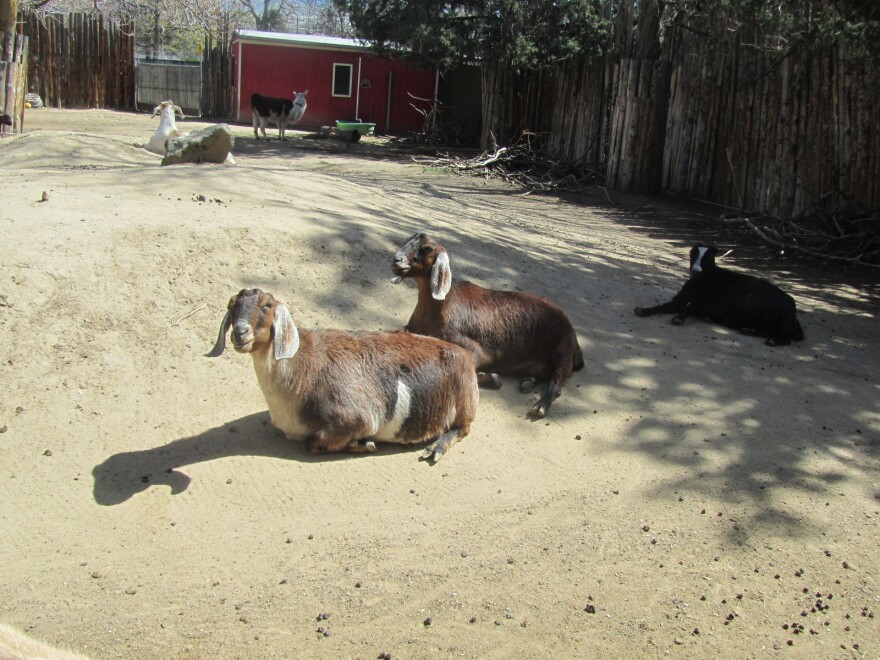Inside Zoo Boise, there’s an exhibit called the Zoo Farm. You put a quarter in what looks like a gumball machine. Out comes food pellets so you can feed the goats and sheep.
All those quarters go to conservation to protect animals in the wild. Since 2007, Zoo Boise has made wildlife conservation part of its mission, raising $1 million dollars for conservation projects. The Zoo celebrates this milestone Saturday at Boise State University.
Steve Burns is the Executive Director of Zoo Boise. “We’ve got a number of things around the Zoo, a number of experiences that visitors can participate in that generate money for conservation," he says. "So if you feed the giraffes, which is $3.00, then that money goes to conservation. We have a sloth bear feeding every day. We have a boat ride that visitors can ride and go see monkeys and that costs $1.00. All that money goes for conservation,” says Burns. “There’s a whole number of little ways in which we generate money for conservation and the Zoo Farm last year generated about $35,000 for conservation.”
Q. How many conservation projects has the Zoo supported?
A. Over the past five years, we’ve given out 76 grants and that’s to about 40 different organizations. We are about to surpass the $1 million dollar mark in grants.
Q. What project stands out?

A. That’s tough to say, there’s a lot of them. There’s the International Rhino Foundation. It’s helping to protect Javan Rhinos. It’s the most endangered rhino species in the world. There’s 47 of them left in Ujung Kulon National Park in Indonesia. That grant went to help expand the national park. That was pretty important.
Q. What prompted you to focus on conservation?
A. The American public probably has no idea about how rare some species are. We give this talk and we say if we asked you to close your eyes and we said the word zoo, this list of animals pops into your head. Our guess is that includes lions, tigers, giraffes, elephants, hippo, rhino, polar bear, panda bear and the three big great apes, chimps, gorillas, and orangutans.
Those animals, those eleven species, which are some of the most famous on earth, have a combined population of 1,071,000, 500,000 of that is elephants. So if you took elephants out of that equation, ten of the most famous species on earth have a combined population of less than the number of people living in the Treasure Valley. So there’s 25,000 polar bears left. There’s 3,200 tigers. There’s 1,200 pandas. The number of lions have dropped from 400,000 to 30,000 in the last 20 to 30 years.
So we spend our day thinking about animals, we’re deeply concerned about animals and it’s not just animals that live in a zoo. The last thing that we would want is for animals to only be found at the zoo. We sort of changed the way we look at the zoo. It’s always been here for recreation. We’re still here for that. It’s been here for education. We’re still here for that. But there’s got to be a higher purpose as to why we have animals at the zoo and that higher purpose is they’re here to help generate hundreds of thousands of dollars to help protect their wild counterparts on an annual basis. That’s the reason.

Right across the sidewalk from my office there’s an Amur Leopard. The Amur Leopard is a sub-species of leopard. It’s found in the same region that the Amur Tiger is found over in the Russian Far East. There’s 35 of them left in the wild. You can’t help but come to work every day and you see this spectacular leopard, she’s absolutely beautiful, and you think, there’s 35 of them left in the wild. We’ve got to do something. So this is what we’ve done, we sort of changed the mission of the Zoo. We’re still a zoo, but the reason why we’re a zoo is different.
Zoo Boise hosts a Wildlife Conservation Expo this Saturday at Boise State. It will feature stories from 14 of the conservation projects helped by Zoo Boise.
Copyright 2013 Boise State Public Radio



